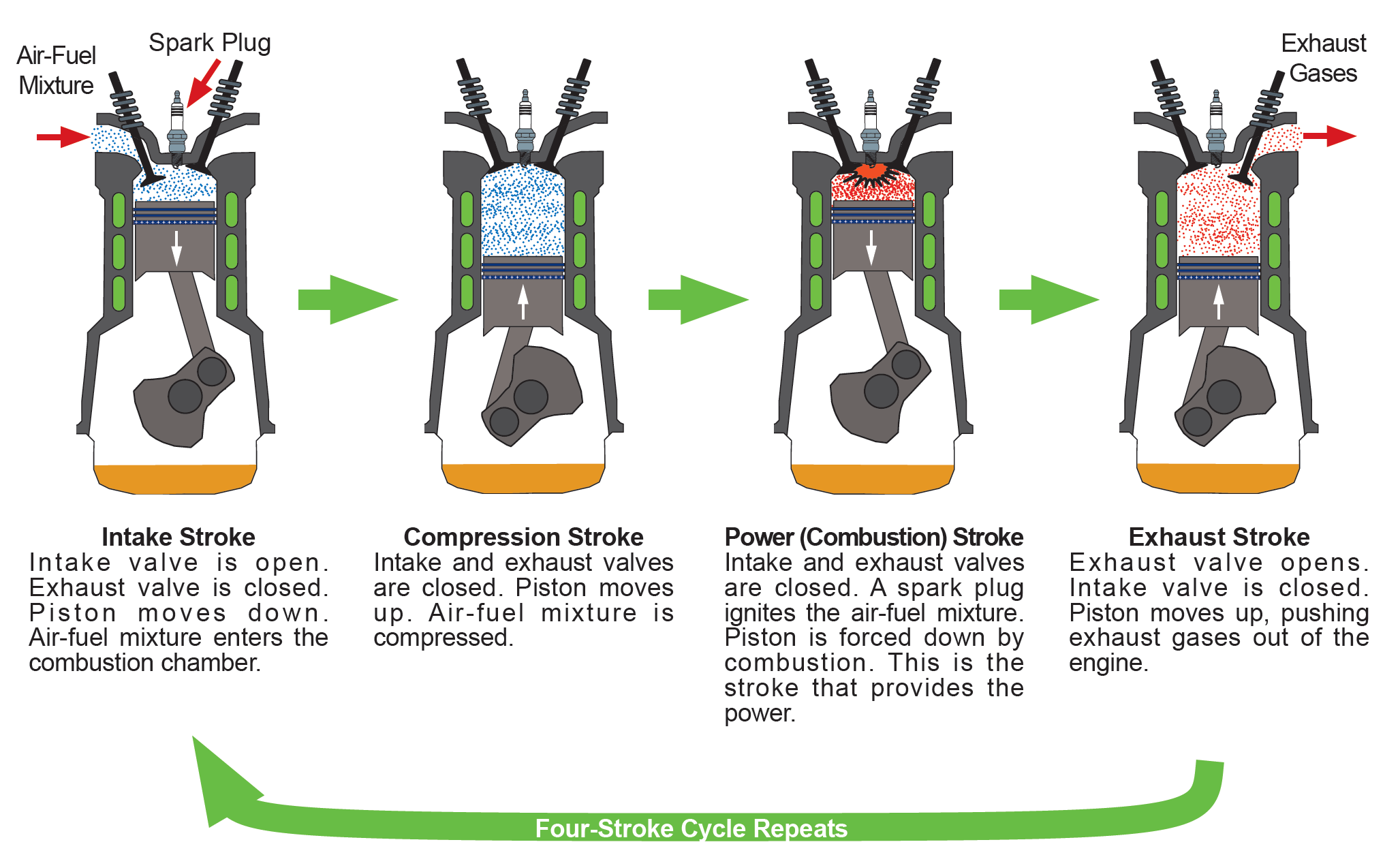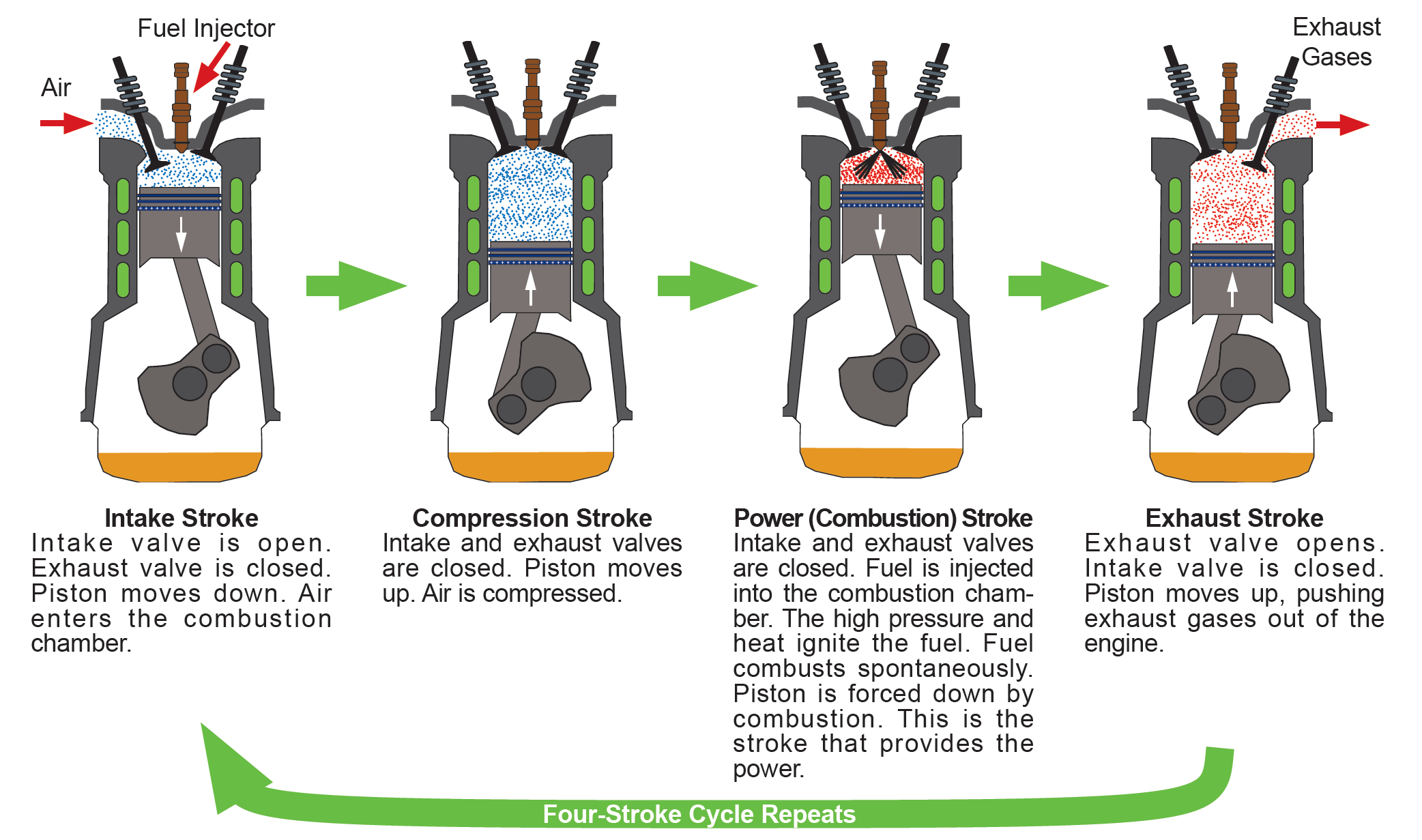How Cars Work
-
Introduction - How Cars Work
-
Objectives - How Cars Work
-
Automotive Timeline3 Topics
-
How Cars Work6 Topics
-
Fuels and Designs3 Topics
-
Engine Identification2 Topics
-
Vehicle Identification6 Topics
-
Parts and Systems2 Topics
-
Careers3 Topics
-
Summary - How Cars Work
-
Activities - How Cars Work2 Topics
-
Review - How Cars Work
-
Test - How Cars Work1 Test
Four-Stroke Engine
The four-stroke internal combustion engine (also known as the Otto cycle, named after Nikolaus Otto) is the most common type used in automobiles. In a four-stroke engine the piston makes reciprocating (back and forth or up and down) movements to convert the chemical energy of fuel into mechanical energy of motion (kinetic energy).
Spark Ignition
Spark ignition (SI) engines are fueled by gasoline, propane, natural gas, or a gasoline/alcohol blend. A spark plug ignites the air-fuel mixture. The four-strokes of the spark ignition engine are intake, compression, power (combustion), and exhaust. To complete the four strokes, the crankshaft makes two revolutions.

Compression Ignition
Compression ignition (CI) engines are fueled by diesel. The four strokes of the compression ignition engine are similar to the spark ignition engine, except fuel is not mixed with air in the intake system. Instead diesel is injected directly into the combustion chamber or indirectly into a swirl (precombustion) chamber. Once in the combustion chamber, the diesel combusts spontaneously from the high pressure and heat. CI engines do not use spark plugs.

For efficient combustion to occur in an internal combustion engine (ICE), there needs to be the correct air-fuel mixture, sufficient compression, and an ignition source (heat or spark). These three things must function properly to achieve engine efficiency and minimize emissions.


